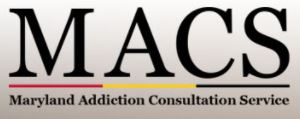Clinical Resources
The following educational and training resources are designed to assist providers with improving treatment of patients with substance use and mental health disorders, chronic pain or other health problems affected by the use or misuse of controlled substance (CS) prescription drugs.
Referral Resources
According to the American Society of Addiction Medicine (ASAM), addiction is a primary, chronic disease that, without treatment or engagement in recovery activities, is progressive and can result in disability or death. If you believe your patient may have a substance use disorder, it is important that the patient is assessed for the severity and specificity of the disorder and, if necessary, referred to the appropriate type of behavioral health provider.
Below are steps you can take to assist your patients on their path to recovery, including Screening, Brief Intervention and Referral to Treatment (SBIRT):
Screening - Use standardized screening tools to identify patients engaging in risky substance use
Brief Intervention - Engage your patient in a short conversation to increase insight and awareness about their substance use and motivation for behavioral change
Referrals to Treatment - There are resources available to assist you with linking your patients to specialty behavioral healthcare. When contacting Jurisdictional Coordinators or certified service providers, you may want to inquire about a full assessment for your patient to ensure they are placed in the appropriate level and type of care. See links following SBIRT information for how to access these providers.
For more information on screening for and treating substance use disorders, how to be reimbursed for SBIRT and other relevant topics, see the
Maryland SBIRT webpage:
Maryland’s Crisis Hotline Call 211, Press 1
Maryland Crisis Connect is available 24 hours/7 days a week to provide support, guidance and assistance on how to access SUD services, in addition to the mental health crisis services provided by this hotline. Those seeking help will be given information about naloxone, and recovery support and family services, as available/appropriate in the individual’s local area. Should your patient or family member wish to reach a crisis counselor regarding substance use disorders, or for information on accessing community treatment services, help is available via Maryland Crisis Connect: CALL 211, Press 1 or TEXT 898-211 (TXT 211), and text your zip code or CHAT at MDCrisisConnect.org
Hours of Operation: Monday through Friday 8:00am – 6:00pm EST
Each Maryland county and Baltimore City have a coordinator for substance use disorder treatment services. These coordinators are a local resource for patients who
need access to treatment and recovery support services.

1-855-337-MACS (6227) http://www.marylandmacs.org/ MACS provides support to primary care and mental health prescribers across Maryland in the identification and treatment of Substance Use Disorders. Services include: - Providing free phone consultation for clinical questions, resources, or referral information
- Offering education and training opportunities related to substance use disorders
- Assisting in the identification of addiction and behavioral health resources that meet the needs of the patients in your community
|
Buprenorphine
Approved for clinical use in October 2002 by the Food and Drug Administration (FDA), buprenorphine represents the latest advance in medication-assisted treatment (MAT). Medications such as buprenorphine, in combination with counseling and behavioral therapies, provide a whole-patient approach to the treatment of opioid dependency. When taken as prescribed, buprenorphine is safe and effective.
Provided by the federal Substance Abuse and Mental Health Services Administration (SAMHSA), this locator has information on physicians who are authorized to prescribe buprenorphine products (including Suboxone) for the treatment of opioid dependence.
For more information on buprenorphine, medication-assisted treatment, and receiving a waiver, please visit: http://www.samhsa.gov/medication-assisted-treatment/treatment/buprenorphine
Safe Opioid Prescribing Resources
Centers for Disease Control and Prevention (CDC) Opioid Guidelines
Released in March 2016, the CDC’s opioid prescribing guidelines can help providers make informed decisions about pain treatment in primary care settings. The site has a wealth of research, infographics, and trainings to encourage providers to implement best practices for responsible prescribing through education on non-opioid pain treatment therapies, proper dosage, and tapering and addictions screening.
On February 25, 2020, morphine milligram equivalents (MME) were added to the PDMP. MME converts prescription opioids into a standard value that is based on morphine. MME is intended to help clinicians make safe, appropriate decisions while managing pain. For more information please view the following resources:
And for more information on best practices and resources for responsible opioid prescribing:
Naloxone & Overdose Response Program (ORP)
Naloxone (NARCAN®, EVZIO®) is a prescription medication that safely and effectively reverses an opioid overdose. Naloxone does NOT: “enable” someone's drug use, have “street” or resale value, or make a prescriber liable for a patient’s overdose. Medical providers can prescribe naloxone directly to patients, become an ORP to certify patients and provide naloxone through a standing order, or refer patients to a local ORP training. Newly promulgated Maryland regulations (COMAR 10.13.03) support the co-prescribing of naloxone, the opioid overdose reversal agent, to these patients. See
Naloxone Co-Prescribing.
The Maryland Department of Health (MDH) also authorizes public and private practices and organizations to become ORPs, which provide standardized training on the signs of an overdose and proper response steps, including naloxone administration. Once an individual is trained and certified through an ORP, they can obtain naloxone at a pharmacy without a prescription.
For more information on naloxone formulations and upcoming ORP training, along with instructions on becoming an ORP, please visit:
NaloxoneMD.org
Pain and Addiction Resources

